-
Executive Summary
-
2
-
Scope of the Report
-
Market Definition
- Definition
- Assumptions
-
2.2
-
Scope of the Study
-
2.2.2
-
Research Objective
-
2.2.4
-
Limitations
-
Research Process
- Secondary Research
-
2.3.1
-
Primary Research
-
2.4
-
Market size Estimation
-
Forecast Model
-
3
-
Market Landscape
-
Porter’s Five Forces Analysis
- Threat of New Entrants
- Bargaining
- Threat of substitutes
- Bargaining Power of Buyers
-
power of buyers
-
3.1.4
-
Segment rivalry
-
Value Chain/Supply Chain Analysis
-
Market
-
Dynamics
-
Introduction
-
Market
-
Drivers
-
Market Restraints
-
Market
-
Opportunities
-
Market Trends
-
5
-
Global Automotive Seat Market, By Type
-
Introduction
-
Bench
- Market Estimates &
- Market Estimates & Forecast
-
Forecast, 2024-2030
-
by Region, 2024-2030
-
Bucket
- Market
- Market Estimates
-
Estimates & Forecast, 2024-2030
-
& Forecast by Region, 2024-2030
-
Folding
- Market
-
5.4.1
-
Market Estimates & Forecast, 2024-2030
-
Estimates & Forecast by Region, 2024-2030
-
Others
- Market Estimates & Forecast, 2024-2030
-
5.5.2
-
Market Estimates & Forecast by Region, 2024-2030
-
Global
-
Automotive Seat Market, By Material
-
Introduction
-
Genuine Leather
- Market Estimates
- Market Estimates & Forecast
-
& Forecast, 2024-2030
-
by Region, 2024-2030
-
Synthetic Leather
- Market
-
6.3.1
-
Market Estimates & Forecast, 2024-2030
-
Estimates & Forecast by Region, 2024-2030
-
Fabric
- Market Estimates & Forecast, 2024-2030
-
6.4.2
-
Market Estimates & Forecast by Region, 2024-2030
-
Global
-
Automotive Seat Market, By Technology
-
Introduction
-
Powered
- Market Estimates &
- Market Estimates & Forecast
-
Forecast, 2024-2030
-
by Region, 2024-2030
-
Heated
- Market
- Market Estimates
-
Estimates & Forecast, 2024-2030
-
& Forecast by Region, 2024-2030
-
Powered & Heated
- Market Estimates & Forecast, 2024-2030
- Market Estimates & Forecast, 2024-2030
- Market Estimates & Forecast by Region, 2024-2030
-
7.4.2
-
Market Estimates & Forecast by Region, 2024-2030
-
7.5
-
Standard
-
Global Automotive Seat Market, By Vehicle Type
-
8.1
-
Introduction
-
Passenger Car
- Market
-
8.2.1
-
Market Estimates & Forecast, 2024-2030
-
Estimates & Forecast by Region, 2024-2030
-
Commercial
- Market Estimates & Forecast, 2024-2030
- Market Estimates & Forecast by Region, 2024-2030
-
Vehicle
-
Global Automotive Seat Market, By Region
-
9.1
-
Introduction
-
North America
- Market
- Market
- Market
- Market
- The
- Canada
-
9.2.1
-
Market Estimates & Forecast, 2024-2030
-
Estimates & Forecast by Type, 2024-2030
-
Estimates & Forecast by Material, 2024-2030
-
Estimates & Forecast by Technology, 2024-2030
-
Estimates & Forecast by Vehicle Type, 2024-2030
-
U.S.
-
& Forecast, 2024-2030
-
Forecast by Type, 2024-2030
-
Forecast by Material, 2024-2030
-
& Forecast by Technology, 2024-2030
-
& Forecast by Vehicle Type, 2024-2030
-
Europe
- Market
- Market
- Market
- Market
- U.K.
- France
- Italy
-
9.3.1
-
Market Estimates & Forecast, 2024-2030
-
Estimates & Forecast by Type, 2024-2030
-
Estimates & Forecast by Material, 2024-2030
-
Estimates & Forecast by Technology, 2024-2030
-
Estimates & Forecast by Vehicle Type, 2024-2030
-
9.3.6.2
-
Market Estimates & Forecast by Type, 2024-2030
-
9.3.6.3
-
Market Estimates & Forecast by Material, 2024-2030
-
9.2.6.4
-
Market Estimates & Forecast by Technology, 2024-2030
-
9.2.6.5
-
Market Estimates & Forecast by Vehicle Type, 2024-2030
-
9.3.7
-
Germany
-
& Forecast, 2024-2030
-
Forecast by Type, 2024-2030
-
Forecast by Material, 2024-2030
-
& Forecast by Technology, 2024-2030
-
& Forecast by Vehicle Type, 2024-2030
-
9.3.9.2
-
Market Estimates & Forecast by Type, 2024-2030
-
9.3.9.3
-
Market Estimates & Forecast by Material, 2024-2030
-
9.3.9.4
-
Market Estimates & Forecast by Technology, 2024-2030
-
9.3.9.5
-
Market Estimates & Forecast by Vehicle Type, 2024-2030
-
9.3.10
-
Rest of Europe
-
Type, 2024-2030
-
Asia Pacific
- Market
- Market Estimates
- Market Estimates
- Market Estimates
- Market Estimates
- China
- India
- Rest of Asia
-
Estimates & Forecast, 2024-2030
-
& Forecast by Type, 2024-2030
-
& Forecast by Material, 2024-2030
-
& Forecast by Technology, 2024-2030
-
& Forecast by Vehicle Type, 2024-2030
-
9.4.6.2
-
Market Estimates & Forecast by Type, 2024-2030
-
9.4.6.3
-
Market Estimates & Forecast by Material, 2024-2030
-
9.4.6.4
-
Market Estimates & Forecast by Technology, 2024-2030
-
9.4.6.5
-
Market Estimates & Forecast by Vehicle Type, 2024-2030
-
9.4.7
-
Japan
-
& Forecast, 2024-2030
-
Forecast by Type, 2024-2030
-
Forecast by Material, 2024-2030
-
& Forecast by Technology 2024-2030
-
& Forecast by Vehicle Type, 2024-2030
-
Pacific
-
Rest of the World
- Market Estimates
- Market Estimates & Forecast
- Market Estimates & Forecast
- Market Estimates & Forecast
- Market Estimates & Forecast
-
& Forecast, 2024-2030
-
by Type, 2024-2030
-
by Material, 2024-2030
-
by Technology, 2024-2030
-
by Vehicle Type, 2024-2030
-
Competitive Landscape
-
11
-
Company Profile
-
Johnson Controls (U.S.)
- Company Overview
- Financial Overview
- Key Developments
- Strategy
- SWOT Analysis
-
11.1.2
-
Products/Services Offering
-
Lear Corporation
- Company Overview
- Products/Services
- Financial Overview
- Strategy
-
(U.S.)
-
Offering
-
11.2.4
-
Key Developments
-
11.2.6
-
SWOT Analysis
-
Faurecia (France)
- Products/Services Offering
- Financial Overview
- Key
- Strategy
- SWOT
-
11.3.1
-
Company Overview
-
Developments
-
Analysis
-
Toyota Boshoku Corporation (Japan)
- Products/Services Offering
- Financial Overview
- Key
- Strategy
- SWOT
-
11.4.1
-
Company Overview
-
Developments
-
Analysis
-
TS Tech Co. Ltd (Japan)
- Products/Services Offering
- Financial Overview
- Key
- Strategy
- SWOT
-
11.5.1
-
Company Overview
-
Developments
-
Analysis
-
IFB Automotive (India)
- Products/Services Offering
- Financial Overview
- Key
- Strategy
- SWOT
-
11.6.1
-
Company Overview
-
Developments
-
Analysis
-
Magna International Inc. (Canada)
- Products/Services Offering
- Financial Overview
- Key
- Strategy
- SWOT
-
11.7.1
-
Company Overview
-
Developments
-
Analysis
-
DURA Automotive Systems (U.S.)
- Products/Services Offering
- Financial Overview
- Key
- Strategy
- SWOT
-
11.8.1
-
Company Overview
-
Developments
-
Analysis
-
Aktis Engineering Solutions (India)
- Products/Services Offering
- Financial Overview
- Key
- Strategy
- SWOT
-
11.9.1
-
Company Overview
-
Developments
-
Analysis
-
Fisher and Company (Austria)
- Products/Services Offering
- Financial Overview
- Key
- Strategy
- SWOT
-
11.10.1
-
Company Overview
-
Developments
-
Analysis
-
Tata Autocomp Systems Limited (India)
- Products/Services Offering
- Financial Overview
- Key
- Strategy
- SWOT
-
11.11.1
-
Company Overview
-
Developments
-
Analysis
-
Marter Automotive Seating Systems (Turkey)
- Company Overview
- Products/Services
- Financial Overview
- Strategy
-
Offering
-
11.12.4
-
Key Developments
-
11.12.6
-
SWOT Analysis
-
Grammer Seating Systems (Germany)
- Company Overview
- Products/Services
- Financial Overview
- Strategy
-
Offering
-
11.13.4
-
Key Developments
-
11.13.6
-
SWOT Analysis
-
TM Automotive Seating Systems Private
- Company Overview
- Financial Overview
- Key Developments
- Strategy
- SWOT Analysis
-
Limited (India)
-
11.14.2
-
Products/Services Offering
-
RECARO Automotive
- Company Overview
- Financial Overview
- Key Developments
- Strategy
- SWOT Analysis
-
(Germany)
-
11.15.2
-
Products/Services Offering
-
-
List of Tables
-
Global
-
Automotive Seat Market: By Region, 2024-2030
-
Table 2
-
North America Automotive Seat Market: By Country, 2024-2030
-
Table
-
Europe Automotive Seat Market: By Country,
-
Asia Pacific
-
Automotive Seat Market: By Country, 2024-2030
-
Table 5
-
RoW Automotive Seat Market: By Country, 2024-2030
-
Table 6
-
Global Automotive Seat Market, By Type, By Regions, 2024-2030
-
North America Automotive
-
Seat Market, By Type, By Country, 2024-2030
-
Table 8
-
Europe Automotive Seat Market, By Type, By Country, 2024-2030
-
Table
-
Asia Pacific Automotive Seat Market by Type,
-
By Country, 2024-2030
-
RoW Automotive Seat
-
Market by Type, By Country, 2024-2030
-
Global
-
Automotive Seat by Material Market: By Regions, 2024-2030
-
Table 12
-
North America Automotive Seat Market by Material: By Country, 2024-2030
-
Europe Automotive Seat Market by Material: By Country,
-
Asia Pacific Automotive Seat Market
-
by Material: By Country, 2024-2030
-
RoW Automotive
-
Seat Market by Material: By Country, 2024-2030
-
Table 16
-
Global Automotive Seat Market by Technology: By Regions, 2024-2030
-
North America Automotive Seat Market by Technology:
-
By Country, 2024-2030
-
Europe Automotive Seat
-
Market by Technology: By Country, 2024-2030
-
Asia
-
Pacific Automotive Seat Market by Technology: By Country, 2024-2030
-
Table
-
RoW Automotive Seat Market by Technology: By Country, 2024-2030
-
Global Automotive Seat by Vehicle Type Market:
-
By Regions, 2024-2030
-
North America Automotive
-
Seat Market by Vehicle Type: By Country, 2024-2030
-
Table 23
-
Europe Automotive Seat Market by Vehicle Type: By Country, 2024-2030
-
Asia Pacific Automotive Seat Market by Vehicle Type:
-
By Country, 2024-2030
-
RoW Automotive Seat
-
Market by Vehicle Type: By Country, 2024-2030
-
Global
-
Automotive Seat Market: By Region, 2024-2030
-
Global
-
Automotive Seat Market: By Type, 2024-2030
-
Global
-
Automotive Seat Market: By Material, 2024-2030
-
Table 27
-
Global Automotive Seat Market: By Technology, 2024-2030
-
Table
-
Global Automotive Seat Market: By Vehicle Type, 2024-2030
-
North America Automotive Seat Market, By Country
-
North America Automotive Seat Market, By Type
-
North America Automotive Seat Market, By Material
-
North America Automotive Seat Market, By Technology
-
North America Automotive Seat Market, By Vehicle Type
-
Europe: Automotive Seat Market, By Country
-
Europe: Automotive Seat Market, By Type
-
Europe: Automotive Seat Market, By Material
-
Europe: Automotive Seat Market, By Technology
-
Europe: Automotive Seat Market, By Vehicle Type
-
Asia Pacific: Automotive Seat Market, By Country
-
Asia Pacific: Automotive Seat Market,
-
By Type
-
Asia Pacific: Automotive Seat
-
Market, By Material
-
Asia Pacific: Automotive
-
Seat Market, By Technology
-
Asia Pacific: Automotive
-
Seat Market, By Vehicle Type
-
RoW: Automotive
-
Seat Market, By Region
-
RoW Automotive Seat Market,
-
By Type
-
RoW Automotive Seat Market, By Material
-
RoW Automotive Seat Market, By Technology
-
RoW Automotive Seat Market, By Vehicle Type
-
-
List of Figures
-
Research Process of
-
MRFR
-
Top down & Bottom up Approach
-
FIGURE
-
Market Dynamics
-
impact analysis:
-
market drivers
-
impact analysis: market restraints
-
porter’s five forces analysis
-
FIGURE 7
-
Value chain analysis
-
Global Automotive Seat
-
Market SHARE, By Type, 2020 (%)
-
Global Automotive
-
Seat Market, By Type, 2024-2030 (USD MILLION)
-
Global
-
Automotive Seat Market SHARE, By Material, 2020 (%)
-
Global
-
Automotive Seat Market, By Material, 2024-2030 (USD MILLION)
-
FIGURE 12
-
Global Automotive Seat Market SHARE, By Technology, 2020 (%)
-
FIGURE 13
-
Global Automotive Seat Market, By Technology, 2024-2030 (USD MILLION)
-
FIGURE
-
Global Automotive Seat Market SHARE, By Vehicle Type, 2020
-
(%)
-
Global Automotive Seat Market, By Vehicle Type,
-
Global Automotive Seat Market
-
SHARE (%), BY REGION, 2020
-
Global Automotive Seat
-
Market, BY REGION, 2024-2030 (USD MILLION)
-
North
-
America Automotive Seat Market SHARE (%), 2020
-
North
-
America Automotive Seat Market BY Country, 2024-2030 (USD MILLION)
-
FIGURE 20
-
Europe Automotive Seat Market SHARE (%), 2020
-
Europe
-
Automotive Seat Market BY Country, 2024-2030 (USD MILLION)
-
FIGURE 22
-
Asia Pacific Automotive Seat Market SHARE (%), 2020
-
FIGURE 23
-
Asia Pacific Automotive Seat Market BY Country, 2024-2030 (USD MILLION)
-
Rest of the World Automotive Seat Market SHARE (%),
-
Rest of the World Automotive Seat Market BY
-
Country, 2024-2030 (USD MILLION)
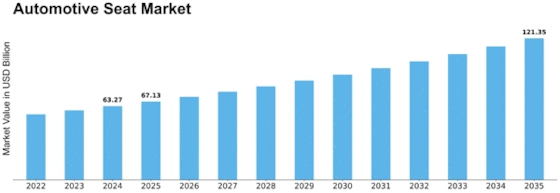

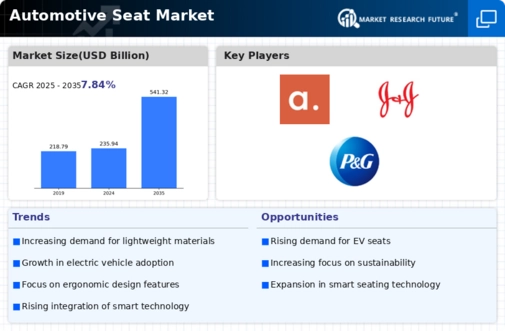

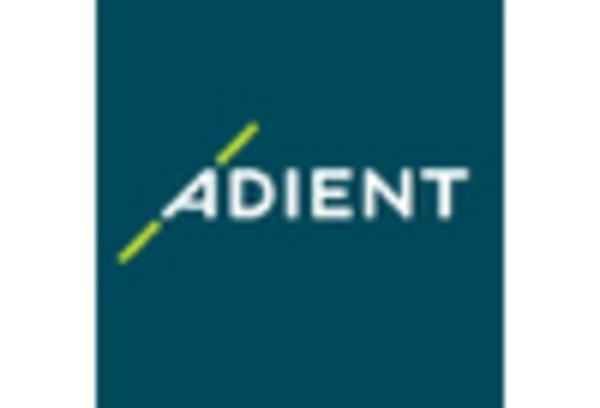
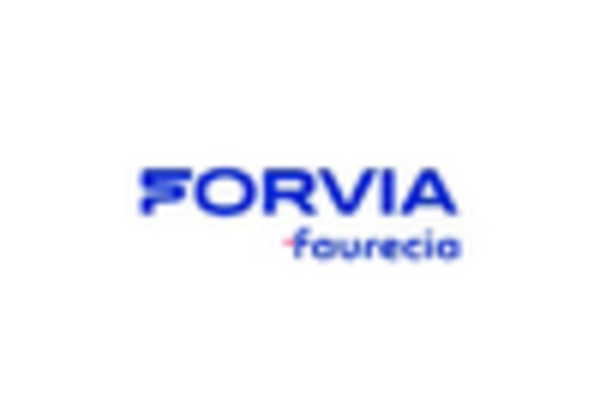
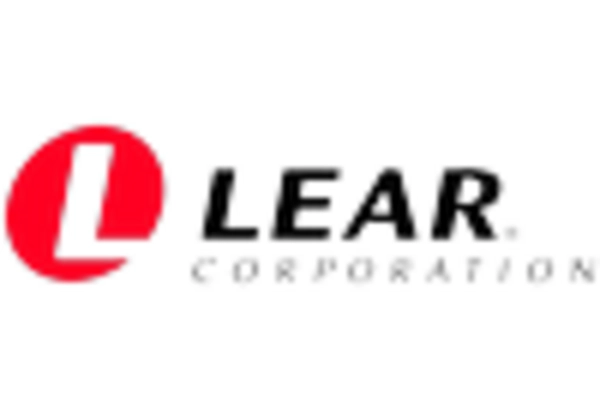
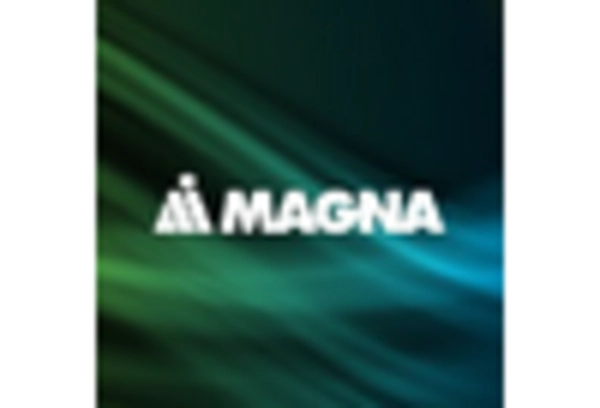
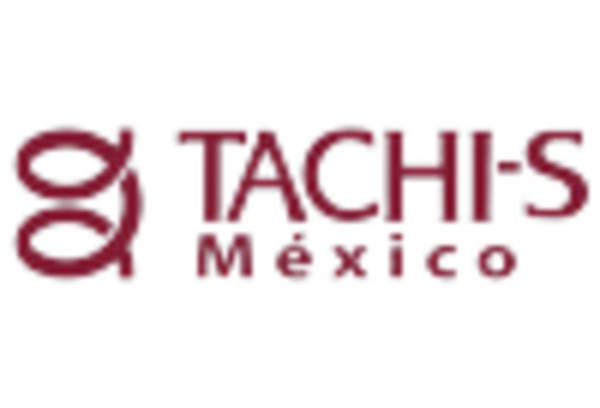
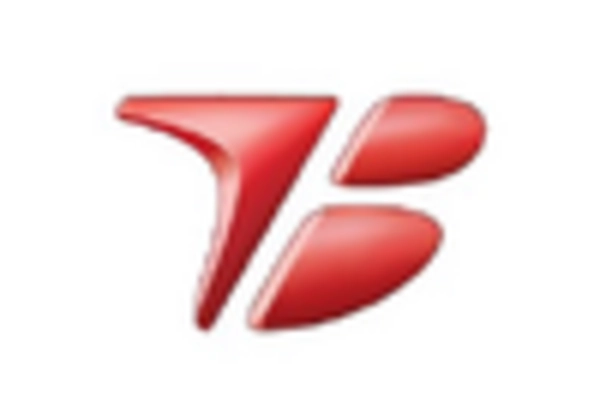

Leave a Comment